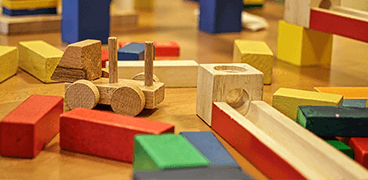In today’s rapidly evolving technological landscape, it has never been more essential to introduce students to the world of coding from an early age. Elementary school is a critical period for cognitive development, and introducing coding at this stage can set your children on a path to success. Despite this, the notion of introducing coding to elementary school students can be overwhelming for educators and parents. Coding in elementary school may seem overly technical and too complicated for young learners still at the beginning phase of their academic journeys. However, we are here to break down misconceptions and take a deeper look into the importance, benefits, and strategies for teaching coding to elementary school students.
The Emergence of Coding in Elementary School
Once deemed a topic for university or specialized institutions, coding has now found its place in elementary schools across the country. More and more elementary schools across the U.S. have introduced coding and computer science into their curricula.
Organizations such as Code.org have launched campaigns advocating for computer science to be a core component of the K-12 curriculum, while several states have mandated standardized coding education into schools at various grade levels. The nationwide push for this inclusion comes from the collective recognition that computational thinking and familiarity with the digital world are crucial skills for the 21st century.
Why Elementary School is the Ideal Starting Point
Coding is the art of telling a computer what to do by writing instructions in a language it understands. When children are exposed to coding at an early age, they are not only learning a technical skill, but a new form of literacy. During their elementary school period, a child’s mind is incredible nimble and flexible, ready to adsorb new information and adopt new skills at an unbelievably rapid rate.
Real-World Application of Coding in the Classroom
Robotics:
Schools are using robots to teach children how to code. Children learn to code by giving commands to these robots, making them move and seeing real-time results of their programming efforts.
Game Development:
Platforms like Scratch allow students to create their own games using simple drag-and-drop coding techniques. Imagination can run free while children learn to code in a fun and engaging manner.
Interactive Stories:
Coding is not just about numbers and logic; it is also about storytelling. Students use coding to weave intricate, imaginative narratives that are interactive, fostering a marriage between creativity and technology.
Different Approaches to Teaching Coding in Elementary School
Every school and district take different approaches to integrate coding into their curricula. Here are a few common ways we’ve seen coding get added to elementary school education:
Integrated Learning:
Here, coding is not treated as a standalone subject. Instead, it is integrated into subjects like math, science, and reading. This holistic method allows students to draw from various subjects and empowers children to understand coding from different perspectives. Young children learn to view coding not as an isolated skill, but as a versatile tool.
Dedicated Coding Classes:
Some schools offer specific courses where students dive deep into various programming languages and frameworks. From Scratch to Python, these lessons cater to different grade levels and learning abilities.
After-School Clubs:
Extracurricular activities such as coding clubs have gained immense popularity. Though not part of the core curriculum, these clubs offer a safe and nurturing environment to explore coding. These clubs often involve fun projects and challenges, allowing students to apply what they have learned in an interactive, engaging way.
Challenges and Considerations
While the benefits of teaching coding in elementary schools are manifold and undeniable, educators, schools, and districts face significant and real challenges. One pressing concern is the training of teachers. Not all educators have the necessary background to adequately teach coding, necessitating professional development programs. Additionally, it is quite a daunting task to ensure equal access to resources, especially in underserved communities, which remains a high priority.
How Parents can Support Coding Education at Home
School is not the only place where children can learn to code. Whether coding is included in your child’s school curriculum or not, including coding into a child’s daily routine outside of school can have a huge impact on their growth. Parents can play an integral role by:
Exploring Online Platforms:
There is an incredible number of free resources online for kids to learn programming. Websites like Code.org or Khan Academy offer beginner-friendly lessons for children.
Apps and Games:
Many educational apps teach fundamental coding concepts through fun, interactive games. This is a perfect way to combine entertainment with learning.
Join Coding Clubs:
Many local communities have coding clubs where children can learn together, fostering a social dimension to their coding journey.
Coding Lessons:
Coding lessons provide an incredible opportunity for your child to be guided in their coding journeys by a trained professional. Lessons can be conducted in a group or one-on-one, online or offline, each format having their own set of pros and cons. Organizations, such as CampusTop, provide high-quality coding lessons at a reasonable cost in order to provide fun, accessible coding education to the masses.
Get the Learning Started with High Quality One-on-One Online Coding Lessons
The Road Ahead for Coding in Elementary Schools
The emergence of coding in elementary schools suggest a promising future; a future in which modern education truly embraces technology and harnesses its power to provide a world-changing education. As technological advancements continue at an unprecedented rate, the integration of coding in elementary school and in a child’s educational journey is not just preferable; it’s imperative.
For any schools, educators, or parents, now is the time to embrace this shift. The future belongs to those with literacy in the language of technology. There’s no better time to start this journey than in elementary school.






